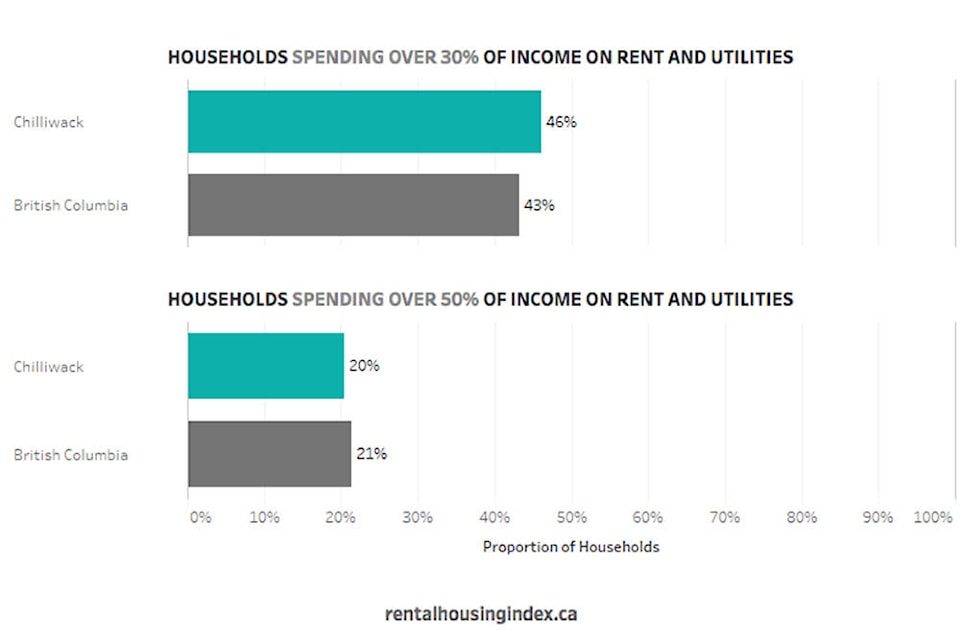Nearly half of Chilliwack residents are spending more than the recommended 30 per cent of household income on housing and one in five are spending more than 50 per cent.
That’s according to the 2018 Canadian Rental Housing Index, which points to a local and nationwide “crisis” that sees housing costs outpacing incomes.
“Traditionally, spending 30 per cent or less of household income on rent has been viewed as the benchmark of what is considered affordable,” said Jill Atkey, acting CEO of the BC Non-Profit Housing Association (BCNPHA). “However, the data shows that spending more than 30 per cent of income on housing has become the new normal for individuals and families in almost all areas of Canada.”
In Chilliwack, 46 per cent of households are spending more than 30 per cent of income on rent and utilities. That is slightly higher than the B.C. average of 43 per cent.
The average monthly rent and utilities, according to the report, in Chilliwack is $998, a little below the B.C. average of $1,148.
Twenty per cent of households in Chilliwack spend more than 50 per cent of their income, a bit lower than the 21 per cent of all B.C. residents.
What makes things more challenging for Chilliwack residents is that incomes here are lower than the B.C. average. The median income in Chilliwack is $39,039 compared to the B.C. median of $45,979. The average income is $50,977, which compares to the B.C. average of $58,698.
According to the BCNPHA, the data paints a worrying picture for rental housing affordability across the country.
“If every renter household that spent more than half of their income on housing costs lived in one place, it would be Canada’s fourth largest city,” said Kira Gerwing, Manager of Community Investment at Vancity credit union. “This shows why a strong community housing sector is absolutely necessary to deliver rental housing that people can afford.”
One of the drivers of these affordability challenges is the increase in the number of Canadians in the rental market. Between 2011 and 2016, nearly 400,000 new renter households were added for a total of more than 4.4-million or 32 per cent of all households in Canada.
“With escalating prices keeping many Canadians from affording home ownership, as well as a lack of affordable rental housing supply, more people are entering the rental market or staying in the rental market longer,” said Jeff Morrison, Executive Director of the Canadian Housing and Renewal Association. “This marks the first time in a generation that the rate of Canadian renters has outpaced the number of Canadians buying a home, and speaks to the need to increase the supply of affordable housing.”
@PeeJayAitch
paul.henderson@theprogress.com
Like us on Facebook and follow us on Twitter.
